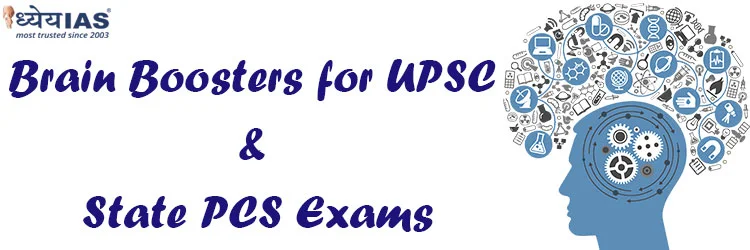Current Affairs Brain Booster for UPSC & State PCS Examination
Topic: Lightning Incidents in India

Context
- Lightning strikes have caused 1,771 deaths between April 1, 2019 and March 31, 2020, according to a report published on December 31 on lightning incidents in India.
About the Report
- The report has been prepared by Climate Resilient Observing Systems Promotion Council (CROPC), a non-profit organisation that works closely with India Meteorological Department (IMD) along with Indian Institute of Tropical Meteorology (IITM), India Meteorological Society (IMS) and World Vision India to disseminate early lightning forecasts.
Key Highlights of the Report
- Uttar Pradesh with 293 deaths, Madhya Pradesh 248, Bihar 221, Odisha 200 and Jharkhand 172 deaths together accounted for more than 60 per cent of the numbers, which are 33 per cent of total fatalities from all natural disasters during the time period.
- In 2018-19 period, there were 2,800 deaths and the drop has been attributed to the efforts of various stakeholders, including CROPC.
- In order to further reduce deaths, the report suggests states “aggressively participate in Lightning Resilient India Campaign and undertake lightning risk management more comprehensively”.
- As per the report, the Government of India and most states have not notified lightning as a disaster.
Occurrence of Lightning
- Lightning is the process of occurrence of a natural ‘electrical discharge of very short duration and high voltage between a cloud and the ground or within a cloud’, accompanied by a bright flash and sound, and sometimes thunderstorms.
- Inter cloud or intra cloud (IC) lightning which are visible and are harmless. It is cloud to ground (CG) lightning, which is harmful as the ‘high electric voltage and electric current’ leads to electrocution.
How to Minimise Deaths?
- Every lightning strikes around a fixed period and almost similar geographical locations in similar patterns.
- As per the report, Kalbaishakhi—Norwesters, which are violent thunderstorms with lightning—claims life in eastern India; pre-monsoon lightning deaths occur mostly in Bihar, Jharkhand, Chhattisgarh and UP.
- Early lightning warning to farmers, cattle grazers, children and people in open areas is key.
- A local lightning safety action plan, like installing Lightning Protection Devices, is also need to prevent deaths.
Technology used toForecast Lightning Strikes
- CROPC has a MOU with the India Met Department (IMD), Ministry of Earth Science (MoES), Government of India to disseminate early lightning forecasts which uses satellite observations, inputs from ‘network of Doppler and other radars’, ‘lightning detection Sensors’ among others.
- This makes Lightning Forecast unique with best possible lead time of even a week taking into account the devastations caused by the severe thunderstorms during pre-monsoon.
Economic Impact of Lightning
- The Centre had increased compensation for victims of natural disaster to Rs 4 lakh in 2015.
- In the last five years there were 13,994 fatalities, which brings the total compensation to around Rs 359 crore.
- There have been phenomenal losses of animal life also from lightning strike.
Recommendations of the Report
- The NDMA has issued comprehensive guidelines for preparations of Lightning action plans to states, but the large number of fatalities show the implementation also needs a more ‘scientific and focused community centric approach’ as well as convergence of various departments.
- Mapping of lightning is a major breakthrough in identifying the precise risk in terms of lightning frequency, current intensity, energy content, high temperature and other adverse impacts.
- With continuous mapping for at least three years, a climatology can be established. This would yield a Lightning Risk Atlas map for India which will form the basis for a lightning risk management programme.









